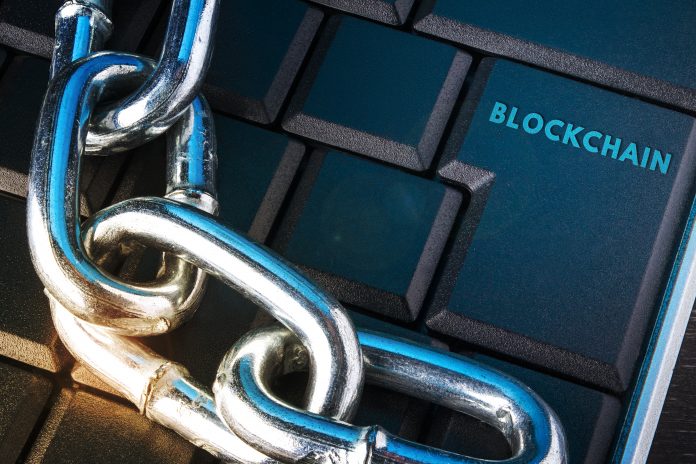Here, TATA consultancy services provide a detailed summary of a recent white paper which discusses unblocking the retail supply chain with blockchain technology
Enhancing retail visibility and trust through blockchain
Today’s retail customers are highly concerned about fair trade practices, and the truth about the claims that retailers make about their merchandise. Empowered by social media, the new age omnichannel customer is conscious, more informed and demands authentic and ethically sourced products than ever before. This leaves retailers with no choice but to improve their visibility into the movement of produce from farm-to-fork or products from factory-to-home. Additionally, retailers stand to gain significant operational advantages with these enhanced visibility initiatives.
Blockchain technology, which has taken the financial world by storm, holds tremendous potential to transform retail Omni-supply chains. By maintaining and managing supply chain data, chain-of-custody information, and supporting autonomous transactions, blockchain can help retailers ensure customer trust over disparate retail supply chain partners. This paper highlights key considerations retailers should look at before embarking on the blockchain journey.
Genesis of blockchain for retail supply chain
“It takes 20 years to build a reputation and five minutes to ruin it.” -Warren Buffett
It is common for consumers to have nagging worries about the quality and source of retail products they buy. No wonder, building customer trust figures among the top three priorities of executives among the world’s largest consumer companies1.
Blockchain helps retailers solve this customer dilemma and build trust. How? By giving every product a ‘digital ID’ that secures all information about it along the product lifecycle – from origin to the retail store.
At the heart of it, blockchain is a distributed database ledger operating over a network of nodes, following cryptographic protocols for data sharing, validation and authentication. The network maintains an immutable chain of data enabling consensus among trustless parties about the existence and status of information stored on the network.
As a mechanism that enables mass-collaboration and execution of collective self-interest, blockchain is a digitally autonomous way of bringing efficiency and reliability to the ever-expanding retail supply chain.
Where and how blockchain creates impact?
Be it the problems with tainted pork from China3 or European horse meat scandal4 or the Egyptian cotton scandal5, retailers face the brunt when poor quality products are sold in the market2.
Retailers conduct transactions with supply chain partners with the help of a number of documents, contracts, and asset transfer slips maintained by their partners. These transactions are mediated by institutions such as banks. Such procedures are typically marked by mistrust and inefficiencies.
Blockchain technology addresses these challenges by providing authenticity to the supply chain. The potential of blockchain to solve retail supply chain manifests in three areas.
- Provenance: Both the retailer and the customer can track the entire product life cycle along the supply chain.
- Smart contracts: Transactions among disparate partners that are prone to lag and error can be automated for more efficiency.
- IoT backbone: Supports low powered mesh networks for IoT devices reducing the needs for a central server and enhancing the reliability of sensor data.
Blockchain can transform the retail supply chain by disrupting the way we produce, move and consume our goods. Retailers will now be able to:
- Adapt easily to regulatory changes in serialisation;
- Tackle counterfeiting and observe manufacturing practices;
- Recall a specific batch of produce in face of contamination alert or detection of defects;
- Handle vendor relationships with ease;
- Accelerate regulatory checks and auditing.
New York Times, Brazil’s Largest Food Companies Raided in Tainted Meat Scandal, March 2017, accessed April 2017, https://www.nytimes.com/2017/03/17/world/americas/brazil-food-companies-bribe-scandal-salmonella.html?_r=0
Gartner says, “Through 2018, 85% of blockchain-named projects will deliver business value without using a blockchain” [8]
Blockchain for retail supply chain: When not to be deployed and why?
With all the attention it has been getting, blockchain is being imagined as a source of elixir to solve a variety of problems across supply chain6. At the same time, there is a fear of incidents similar to the DAO hack11. Blockchain is over-estimated and under-estimated at same time. It needs pragmatic evaluation to achieve tangible benefits and lends itself inefficient and ineffective when used;
- For transactions involving trusted parties (including internal hand-offs within the same organisation)
- Among a specified small number of participants;
- In the midst of a central party acting as an arbitrator;
- For inventory counting or resource handling within the same entity.
With no problems involving trust or robustness, currently used centralised databases provide better performance as compared to blockchain. However, the increasing complexity of supply chains and business models will bring in more stakeholders and an increasing number of multi-party transactions resulting in the effort spent in dealing with them.
Blockchain for retail supply chain: Strengthening the weak links
Digital financial products like bitcoin2 are easy to authenticate with blockchain. The same advantages do not translate to the physical world of retail supply chains. To bring the same level of security to physical retail products, blockchain technology must be complemented with additional actions, technological levers, and process enhancements such as:
-
Addressing low maturity levels among blockchain technology providers:
Multiple technology players with varying maturity and strengths have created an ambiguous market. Careful selection and configuration of the right platform suited to individual business needs are crucial to realise benefits.
-
Balancing control with transparency:
It is important that retailers find an optimal balance between the type of blockchain (public/private/ permission) as well as different consensus and security algorithms. Also, selective transparency mechanisms such as zero-knowledge proofs need to move from the realm of theory to actual production.
-
Investing in complementary technologies:
Infrastructure investments in complementary technologies will be inevitable. Many retailers are exploring serialisation with ‘digital tamper detectable’ packaging or invisible barcodes to strengthen authenticity.
-
Instituting changes in operational culture:
As a collaborative, consensus-based mechanism, blockchain requires buy-in from other supply chain partners. An ecosystem of invested stakeholders is fundamental to attaining its true potential.
-
Adapting to regulatory changes:
Complex sets of trade regulations and laws must be integrated and codified in blockchain-enabled processes, especially for instances involving smart contracts and global trades.
A modular framework with interchangeable and adaptable consensus and security mechanisms is one way to address these requirements. Whatever choices a business makes, they must be married to the business processes followed along the retail supply chain.
Leveraging a structured approach helps streamline adoption
A structured and scientific approach for blockchain adoption can help retailers maximize the potential. This will help them avoid common pitfalls associated with every other hyped-up technology.
-
Blockchain is not for everything:
Identify the most critical products that demand authentication and transparency to produce a delightful customer experience.
-
Right Technology suite:
Evaluate and select the right platform from options such as Ethereum, Hyperledger and so on. The choice is a balance of various factors ranging from business needs to privacy to supported transaction volume.
-
Information at Value chain handoff:
Determine and design processes to capture key information onto the blockchain, at various handoff stages among supply chain nodes.
-
Partner Ecosystem:
Identify partners and onboard them on a mutually agreeable ecosystem (private and/or public).
-
Complement to strengthen:
Select the right complimenting mechanisms to ensure ‘phygital’ authentication, including serialisation, invisible barcodes, and no knowledge mechanisms.
-
Test, Pilot and Scale:
Implement and institutionalise the benefits from the test or pilot results, after validation.
Blockchain through its transparency can bring in a significant brand value enhancement. John West, was able to leverage transparency to enable its customers to track tuna’s journey across their supply chain and net £17 million in increased sales for their efforts7. No wonder retailers such as Walmart & Coop too have started experimenting with blockchain9, 10.
Blockchain: A supply chain game-changer
Blockchain is currently in an exploratory phase and is evolving as you read through this. But, there is little doubt in its potential of helping supply chain stakeholders collaborate better and deliver higher transparency. Retailers who can unblock their supply chains have the opportunity to enhance operational efficiency, portray a superior brand value and provide a significantly enhanced customer experience.
References
- Seeking customer centricity: 2016 Global Consumer Executive Top of Mind Survey by KPMG
- https://bitcoin.org/bitcoin.pdf
- http://www.scmp.com/news/hong-kong/health-environment/article/1999789/tainted-pork-containing-illegal-food-additives
- http://www.telegraph.co.uk/foodanddrink/9857136/Horse-meat-scandal-timeline.html
- http://in.reuters.com/article/welspun-india-scandal-cotton-idINKCN1100EP
- Gartner’s 2016 Hype Cycle for Emerging Technologies
- https://www.provenance.org/whitepaper
- http://www.gartner.com/smarterwithgartner/blockchain-goes-beyond-financial-services/
- https://www.nytimes.com/2017/03/04/business/dealbook/blockchain-ibm-bitcoin.html
- https://www.theguardian.com/sustainable-business/2016/sep/07/blockchain-fish-slavery-free-seafood-sustainable-technology
- http://www.coindesk.com/understanding-dao-hack-journalists/











